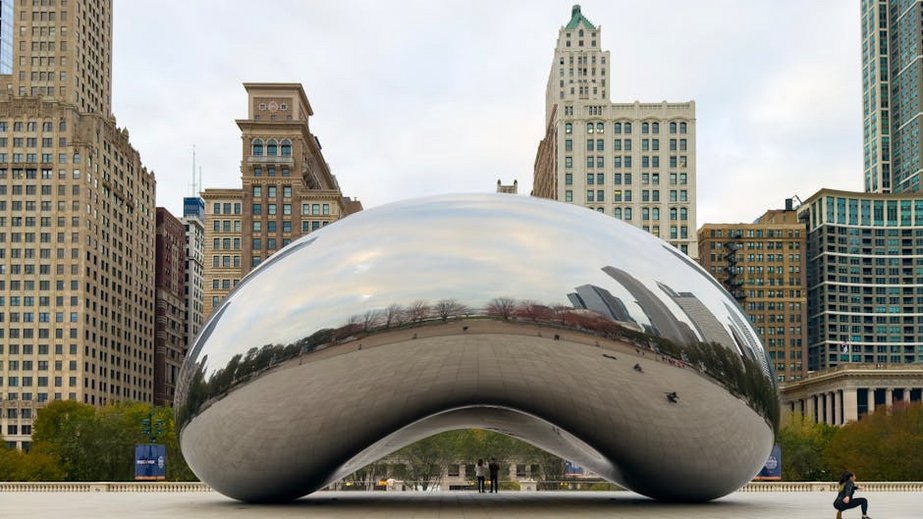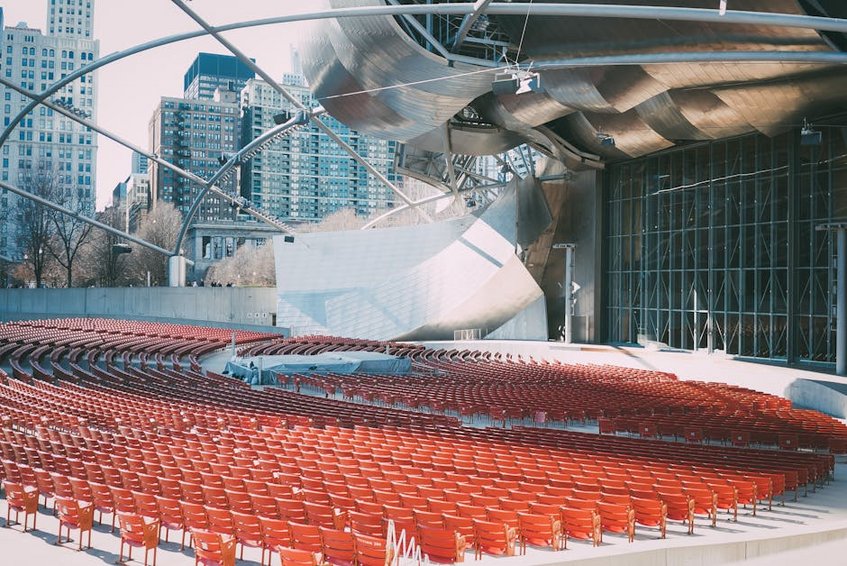Chicago Millennium Park: Your Ultimate Visitor’s Guide
Chicago Millennium Park stands as one of the most iconic urban spaces in the United States, blending world-class art, architecture, and nature in the heart of downtown Chicago. Whether you’re planning your first visit or returning to explore more deeply, this 24.5-acre cultural centerpiece offers unforgettable experiences for travelers of all ages and interests. From the mesmerizing Cloud Gate sculpture to the innovative Jay Pritzker Pavilion, Chicago Millennium Park represents the perfect fusion of artistic vision and public accessibility. You’ll discover why this destination consistently ranks among Chicago’s top attractions, drawing millions of visitors annually who come to admire its stunning landscapes, attend free concerts, and capture those perfect Instagram moments. The park’s thoughtful design ensures that every season offers something special, making it a year-round destination that continues to evolve while maintaining its status as a must-see landmark in the Windy City.
Chicago Millennium Park Essential Information – What Every Visitor Should Know
Before embarking on your adventure to Chicago Millennium Park, understanding its layout and significance will greatly enhance your experience. Opened in 2004 after years of planning and construction delays, the park has become synonymous with Chicago’s architectural innovation and cultural renaissance. Situ between Michigan Avenue and Columbus Drive, with Randolph Street to the north and Monroe Street to the south, the park connects seamlessly to Grant Park and Lake Michigan, creating an expansive green corridor in the urban landscape. What makes Chicago Millennium Park particularly remarkable is its combination of free accessibility and world-class artistic installations, making culture available to everyone regardless of budget. The park operates from 6:00 AM to 11:00 PM daily, with no admission fee for the main grounds, though some interior spaces may have limited hours or ticketed events.
Key Historical Facts and Significance
- Construction began in 1998 with an original budget of $150 million that eventually grew to $490 million, funded through both public and private donations
- The park was conceived as a catalyst for economic development in the surrounding area and has since spurred over $2 billion in adjacent construction
- Architect Frank Gehry designed the Jay Pritzker Pavilion and BP Bridge, marking his first completed project in Chicago
- Cloud Gate, created by British artist Anish Kapoor, was inspired by liquid mercury and weighs 110 tons despite its fluid appearance
- Budget-friendly visit: $0 park admission, bring your own water and snacks, use public transportation ($2.50 CTA train fare), free entertainment at pavilion
- Moderate experience: $20-30 for lunch at nearby casual restaurants, $25 ice skate rental (includes rink admission), $5-10 for museum discounts at adjacent cultural institutions
- Premium outing: $50-75 for fine dining at park-adjacent restaurants like The Gage, $100+ for premium concert seating or special exhibition tickets, $30-40 valet parking
- Official City of Chicago Millennium Park Information
- Choose Chicago Official Tourism Site
Park Layout and Navigation Tips
Navigating Chicago Millennium Park proves surprisingly intuitive despite its size and numerous attractions. The main entrances on Michigan Avenue provide dramatic reveals of the park’s highlights, while the underground parking garage offers convenient access regardless of weather conditions. You’ll want to wear comfortable walking shoes as the park covers nearly 25 acres, with the most famous installations clustered in the northwest section near the intersection of Michigan and Randolph. During summer months, the park can become quite crowded, especially around Cloud Gate (affectionately known as “The Bean”) where visitors queue for photos. Early mornings on weekdays typically offer the most peaceful experience, while weekends bring vibrant energy with families, tourists, and local Chicagoans enjoying the space together.

Chicago Millennium Park Planning Your Visit – Seasons, Budget, and Preparation
Strategic planning ensures you make the most of your time at Chicago Millennium Park, regardless of when you visit or your travel style. The park transforms dramatically with the seasons, each offering distinct advantages and experiences. Spring brings blooming tulips and comfortable temperatures perfect for leisurely exploration, while summer fills the space with free concerts and festivals that showcase Chicago’s vibrant cultural scene. Fall offers stunning foliage against the city skyline and fewer crowds, while winter transforms the park into a magical wonderland with the McCormick Tribune Ice Rink and holiday decorations. No matter when you visit, dressing in layers proves essential as Chicago weather can change rapidly, especially with the lake effect from nearby Lake Michigan influencing temperatures throughout the day.
Best Time to Visit Chicago Millennium Park
The ideal time to visit Chicago Millennium Park depends largely on your preferences and tolerance for crowds. For pleasant weather with moderate attendance, late April through early June and September through October offer the perfect balance of comfortable temperatures and manageable visitor numbers. Summer months (June-August) provide the full festival experience with free outdoor concerts at the Jay Pritzker Pavilion and movies in the park, but you’ll need to arrive early for prime seating. Winter visitors from November through February will experience fewer crowds but should prepare for cold temperatures, though the ice skating rink and holiday lights create a magical atmosphere that many consider worth braving the chill. Tuesday through Thursday typically see lighter crowds than weekends throughout the year.
Budget Planning and Costs
Essential Preparation Checklist
Preparing properly for your Chicago Millennium Park visit ensures a comfortable and enjoyable experience regardless of season. Comfortable walking shoes rank as the absolute essential, as you’ll likely cover several miles exploring the park and adjacent attractions. During summer months, bring sunscreen and a refillable water bottle (water fountains available throughout the park), while winter visitors need warm layers, gloves, and hats for the potentially bitter winds coming off Lake Michigan. Photography enthusiasts should ensure camera batteries are fully charged and memory cards have ample space, as the park offers countless photogenic moments. Download the Chicago Millennium Park app for interactive maps, event schedules, and audio tours that enhance your understanding of the art and architecture you’ll encounter throughout your visit.
Chicago Millennium Park Top Attractions and Activities – Must-See Highlights
Chicago Millennium Park boasts an impressive collection of artistic and architectural marvels that have become icons of the city skyline. The crown jewel remains Cloud Gate, the massive polished stainless steel sculpture that reflects the cityscape in mesmerizing distortions, creating endless photo opportunities as visitors walk beneath its 12-foot-high arch. The Jay Pritzker Pavilion, designed by Frank Gehry, serves as the park’s architectural centerpiece with its sweeping stainless steel ribbons framing an incredible sound system that delivers concert-quality audio to both seated and lawn audiences. The Lurie Garden offers a serene escape with its beautiful perennial displays and clever design that tells the story of Chicago’s transformation from swamp to city. Crown Fountain provides interactive fun, especially during warmer months when children (and adventurous adults) play in the water that flows between two 50-foot glass block towers displaying digital faces of Chicago citizens.
Must-See Artistic Installations
Beyond the famous Cloud Gate, Chicago Millennium Park contains several other significant artworks that deserve your attention. The Boeing Galleries feature rotating exhibitions of contemporary sculpture, often by internationally renowned artists, creating an open-air museum experience that changes throughout the year. Jaume Plensa’s Crown Fountain remains technologically innovative even years after its installation, with its video portraits that occasionally purse their lips to spray water on delighted visitors during summer months. The Harris Theater for Music and Dance, while primarily a performance venue, features striking architecture worth appreciating even if you don’t attend a show. Don’t miss the McCormick Tribune Plaza & Ice Rink in winter, which transforms into an alfresco dining space in summer, demonstrating the park’s ingenious multi-season design that maximizes usage throughout the year.
Hidden Gems and Local Favorites
While millions visit the major attractions, savvy travelers know that Chicago Millennium Park contains several less-crowded spots that offer equally rewarding experiences. The Exelon Pavilions feature stunning green roofs that blend architecture with ecology, and their underground spaces host interesting exhibitions about sustainability. The Wrigley Square and Millennium Monument honor Chicago’s history with its classical colonnade framing a beautiful lawn area that’s perfect for picnics away from the main crowds. During summer, the family-friendly activities at the Chase Promenade often include free art-making workshops and cultural demonstrations that provide hands-on experiences beyond passive observation. Local Chicagoans particularly love the early morning hours when the park feels nearly private, with joggers and dog-walkers enjoying the space before the tourist crowds arrive around 10:00 AM.
Chicago Millennium Park Practical Travel Information – Transportation and Accommodation
Reaching Chicago Millennium Park proves remarkably easy thanks to Chicago’s excellent public transportation system and central location. The park sits in the heart of downtown, making it accessible from virtually anywhere in the city and many suburbs. If driving, the Millennium Park Garage (entrance on Columbus Drive between Monroe and Randolph) offers direct underground access to the park, though parking rates range from $25-45 for day parking depending on events. Numerous surface lots and garages within a few blocks offer competitive pricing, especially if you’re willing to walk 5-10 minutes. For the most stress-free approach, public transportation delivers you practically to the park’s doorstep, with multiple CTA train lines stopping at stations just blocks away and countless bus routes serving Michigan Avenue and adjacent streets.
| Transportation Method | Details and Tips | Approximate Cost (USD) |
|---|---|---|
| CTA Train | Red, Blue, Green, Orange, Brown, Purple, Pink lines all have stations within 0.5 miles | $2.50 one-way |
| Bus | Numerous routes on Michigan, Columbus, and State streets; #3, #4, #6, #7, #126, #147 most convenient | $2.25 one-way |
| Rideshare | Designated pickup/dropoff zones on Columbus Drive; surge pricing during events | $8-15 from downtown |
| Bicycle | Divvy bike share stations throughout area; protected bike lanes on adjacent streets | $3.30 single ride |
| Walking | Easily accessible from Loop hotels; pedestrian-friendly pathways throughout | Free |


